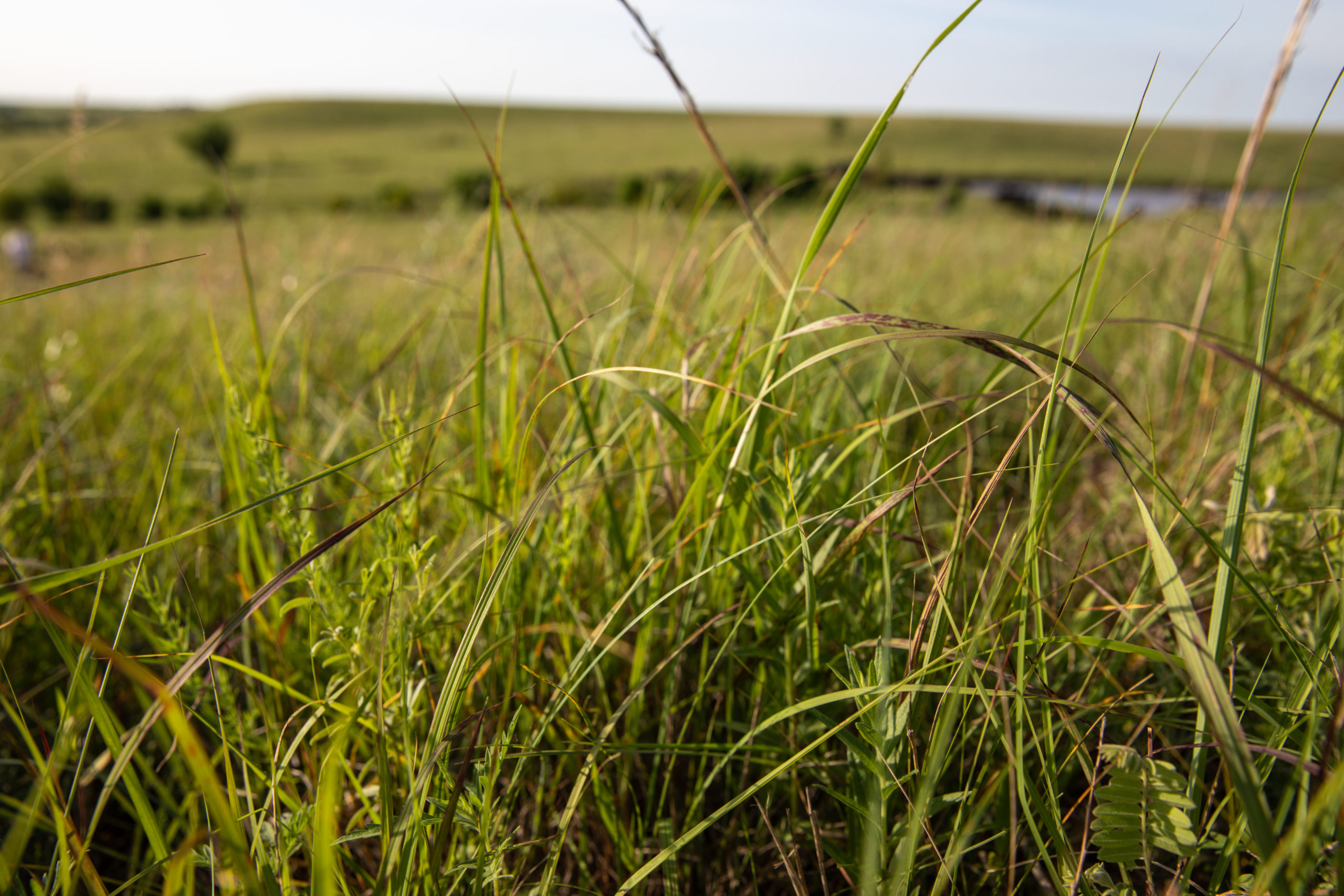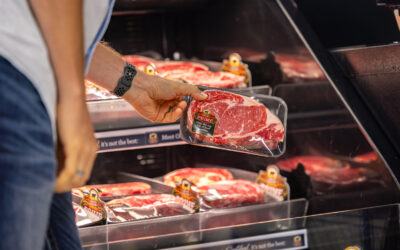
Certified Angus Beef & Ducks Unlimited Work Together to Preserve Working Grasslands
Unique partners collaborate to showcase the environmental benefits of cattle production.
by Abbie Lankitus & Kylee Kohls
July 25, 2022
Grass and water.
These are the essential elements in beef production — the same resources vital to healthy waterfowl populations. Productive agriculture and conservation go hand in hand.
That’s why Certified Angus Beef announced a collaboration with Ducks Unlimited at the 2021 Angus Convention in Fort Worth, Texas. Together, the two organizations assembled half a million dollars to launch the Working Grasslands Conservation Initiative, helping unlock an additional $2.5 million in grants to fund the initiatives’ work over the next three years.
Supporting economic and environmental stewardship, this project allows cattlemen to lean on the technical expertise of Ducks Unlimited personnel through voluntary, cost-sharing programs focused on preserving and restoring grasslands important to cattle ranching, duck populations and our climate in the Northern Great Plains.
“Together, we can deploy more voluntary, incentive-based programs that work for the Angus rancher while advancing carbon sequestration, clean water and biodiversity,” says Bruce Cobb, executive vice president of production for Certified Angus Beef.
The three-year initiative includes financial and technical assistance to interested landowners, notes Billy Gascoigne, Director of Agriculture and Strategic Partnerships for Ducks Unlimited.
“This collaborative work rallies around ranchers facing growing challenges while being the stewards of our remaining grasslands and wetlands in some of our most priority landscapes,” he says. “We see ranchers trying to keep improving how they produce cattle while remaining economically viable. We want to make sure they have the resources needed and help elevate the critical role of livestock in preserving this critical habitat.”
“Certified Angus Beef is committed to demonstrating the benefits of beef production beyond a great steak,” Cobb says. “Healthy ecosystems come along as a byproduct of raising the best tasting beef.”

Third-generation ranchers from the James River Valley in Glenfield, North Dakota, agree.
Brothers Justin and Nathan Spickler made good use of Ducks Unlimited cost-share programs, each run their own Angus seedstock herds and grow forage crops.
“We live in the area where the tall- and short-grass prairies meet,” Justin says. “It’s great grass and very productive, with a wide species variety so we can raise heavy calves without supplemental feed.”
That makes Spickler pastures a perfect symbiotic habitat for waterfowl and Angus cattle.
Waterfowl nest upland and need grass to procreate, sometimes miles from the nearest water.
Justin linked with Ducks Unlimited in 2017 and Nathan in 2019 on similar projects. They cost-shared fencing and built water tanks supplied by solar energy, as well as grazing cover crops.
“By starting in our rye, we hit native grass about a month later than normal,” Nathan says. “It allowed us to rest our grasses way more than what we could otherwise in the drought.”
Justin appreciates the common ground: “Improvement of range land helps us both,” he says. “This is a good relationship—helping people raise Angus beef. It’s a win for both.”
Often called the most endangered ecosystem in North America, the tallgrass prairie offers valuable, resilient carbon storage. One of the best ways to maintain these vital grasslands are through livestock integration on family farms and ranches.
“These lands are more sustainable now and in the future when they are being stewarded by ranchers grazing livestock,” Gascoigne says. “Our conservation staff live in these same communities and are vested in developing programs that meet local needs. We sit down at the kitchen tables with farm families and identify solutions through fencing, water development, cover-crop seeding, soil health evaluations, and rotational grazing to make better grass and wetland conditions.”

The Prairie Pothole Region (PPR), which extends far into Canada, stretches in the U.S. from northwest Montana to central Iowa and hosts more than 4 million ducks in its grass biomes.
Historically, half to as much as 80% of North American waterfowl utilize the PPR to nest and rear their young. This same region has been important to ruminant animals for centuries – first bison, now cattle.
“We know these grasslands evolved with grazing animals—an important factor in rangeland and soil health,” Gascoigne adds. “Working in this landscape for 85 years, we recognize that proactive work with private owners—farmers and ranchers—lets us achieve a lot more win-wins at a scale important to the sustainability of waterfowl and cattle production.”
Cattlemen often surround themselves with advisors and expertise outside their primary focus, Cobb says. It creates a team.
“If you have a cattle operation, you have vets, nutritionists, risk managers, bankers and tax accountants,” he notes. “Why not have somebody to help you understand the health of your land?”
The people at Ducks Unlimited understand conservation biology, rangeland health and agronomy. Gascoigne adds, “We know less about how to drive value back to these ranchers so they can be economically sustainable for generations to come. The experience of Certified Angus Beef in this realm is what’s so powerful about this work: to have diversity within the sustainability views of economics—environmental, social and cultural.”
Both organizations understand maintaining grasslands requires sustained ranching. The Working Grasslands Conservation Initiative is a unique partnership for a unique time, meeting the call of consumers while supporting family ranchers.
You may also like
CAB Sets Sales Records, Sees Historically High Brand Acceptance Rates
In an otherwise tough time in the beef business, sales and supply records have been a bright spot. The positive numbers mean that quality beef production has not let up, and beef demand is holding. Consumers have proven the value proposition: the good stuff is worth a little more money, for a better eating experience.
Feeding Quality Forum Dates Set Earlier in August
When you’re feeding cattle, it counts to keep track of every calf, pound and dollar. Beyond the event’s educational sessions, networking between segments of the beef supply chain is invaluable—from feeders and cow-calf operators to allied industry and university researchers.
Gardiners Highlight Service, Strength at Foodservice Leaders Summit
Mark Gardiner and his son, Cole, of Gardiner Angus Ranch offered a boots-on-the-ground perspective for CAB specialists attending the annual event, designed to deliver resources that help train foodservice teams and serve consumers at a higher level.



